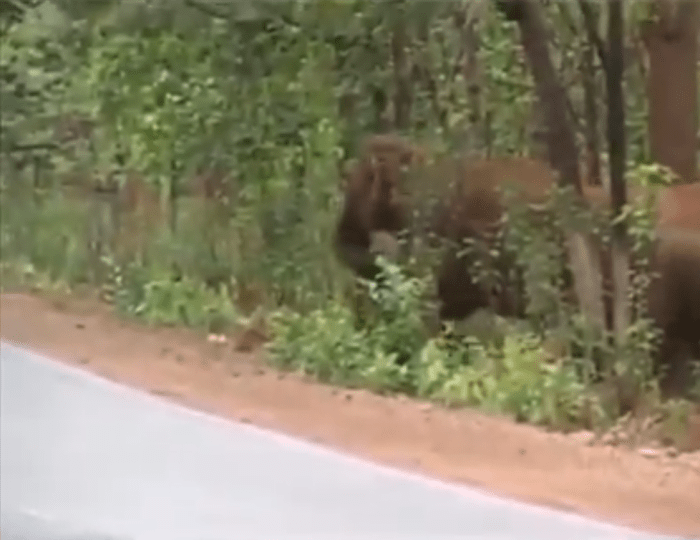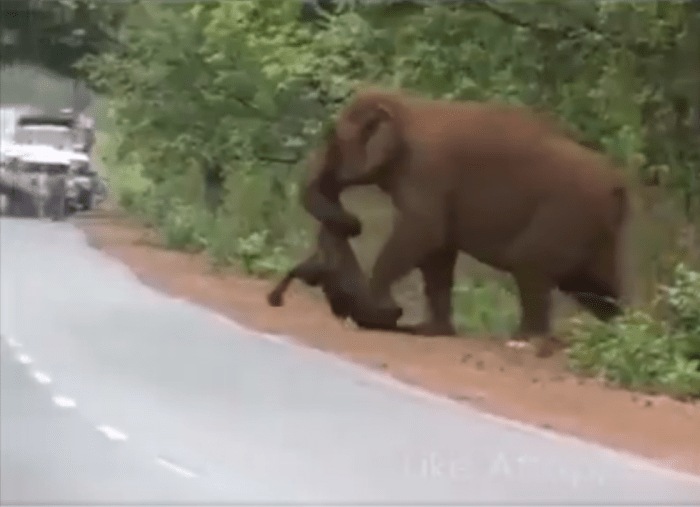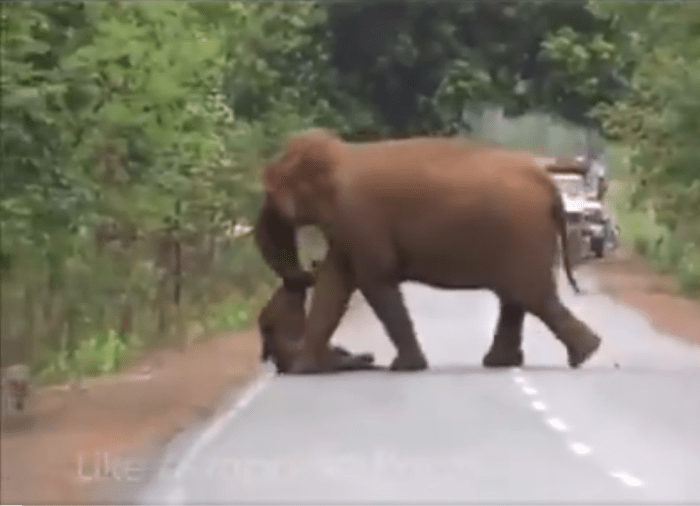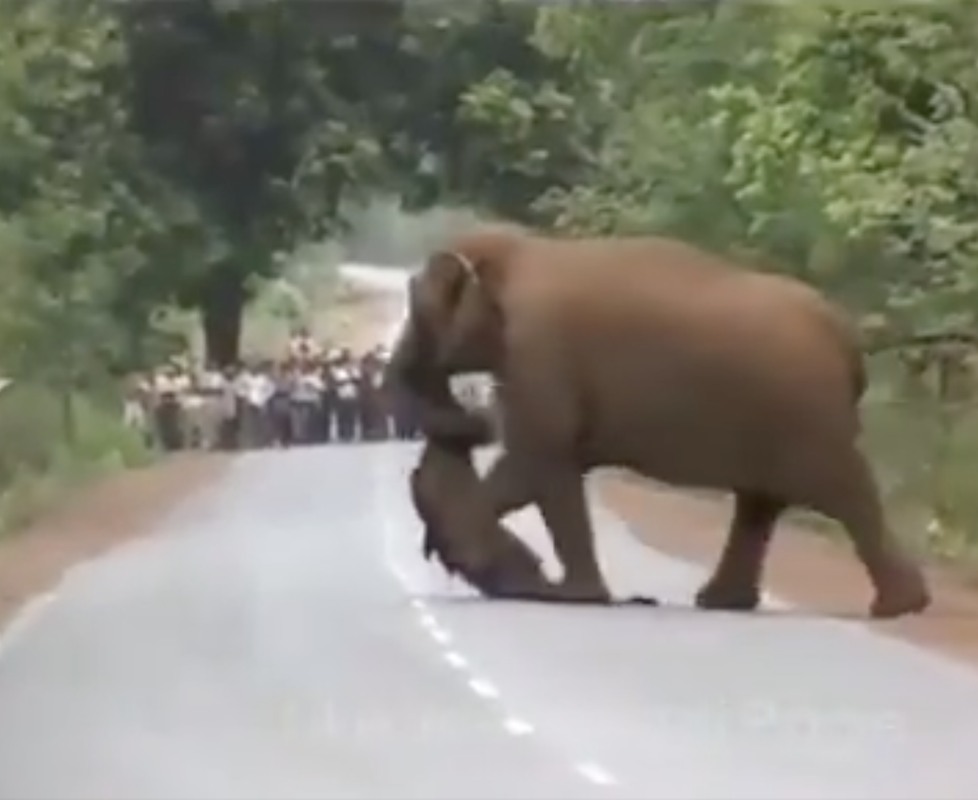A touching video of elephants organizing what appears to be a “funeral” for a deceased young elephant has taken the internet by storm, stirring a wave of emotions across social media.
The heartwarming footage, posted on Twitter by Parveen Kaswan, a forest ranger in the Indian Foreign Service, has struck a chord with thousands of viewers. In the video, an adult Indian elephant emerges from a forested area onto a road, gently cradling the lifeless body of a young elephant with its trunk.

Photo Credit: Parveen Kaswan/X
The adult elephant places the small body on the ground, standing vigil over it while awaiting the arrival of other members of the herd. The rest of the herd soon arrives, forming a line reminiscent of a solemn procession.
In a poignant display of unity, both young and mature elephants gather around the tiny carcass. With the herd standing as a somber congregation, they gently lift the lifeless elephant and carry it into the forest, leaving onlookers moved by the poignant scene.
The video resonated deeply on social media, receiving over 5,000 retweets and nearly 12,000 ‘likes.’ Commenters expressed their profound emotional reactions, with one user, Devika, reflecting on the powerful message it conveys: “This is heart-rending. There’s a lot that humans can learn from animals.”

Photo Credit: Parveen Kaswan/X
Another user, Sumita Bhatt, shared her astonishment, saying, “Omg!!! First time I hv seen such video… Really very touching.” Mohan Alembath, too, found the video deeply moving and said, “elephants’ capacity for complex emotions like grief is truly remarkable.”
While scientists advise caution in attributing human-like “grief” to animals, elephants are among several species observed displaying mourning behaviors. They have been known to exhibit a keen interest in the remains of their deceased, sometimes engaging in what appear to be “funeral” rituals.
Elephants may pass by the bodies of deceased herd members repeatedly, touching and smelling the remains, according to the Smithsonian magazine. These gestures indicate a form of reverence or sensitivity to the dead.

Photo Credit: Parveen Kaswan/X
Last year, the world witnessed a similar display of mourning when a female killer whale carried her dead calf on her back for more than two weeks through Canadian waters before releasing it.
Chimpanzees, too, have exhibited mourning practices. In captivity, a small group of chimpanzees checked the body of a fallen comrade for signs of life, cleaned her fur, and refused to visit the location where she had died for several days.
In Zambia, primate researchers captured a mother chimpanzee using a piece of dried grass to clean debris from the teeth of her deceased son, suggesting that social bonds persist even after death.
Various other species, such as magpies, have been seen burying their dead under tufts of grass. In an intriguing incident, a young boy filmed peccaries, wild pig-like animals found in the United States, participating in mourning rituals, repeatedly visiting a deceased member, nuzzling and sleeping alongside it.
These poignant examples illustrate the remarkable depth of emotion and social connection that extends into the animal kingdom, showcasing the beauty of nature’s many heartwarming and touching moments.

Leave a Reply